


FEBRUARY 2025




FEBRUARY 2025
Operated in support of the Kenya Wildlife Service, Sheldrick Wildlife Trust's Aerial Unit monitors for illegal activity from the skies and offers rapid response assistance in anti-poaching operations, human-wildlife con�ict, veterinary treatments, orphan rescues, and all manner of �eld emergencies.
This report details Aerial Unit activities for February 2025
27,678
Hours �own: Areas patrolled:
289
Kilometres �own:
39,234
Tsavo East, Tsavo West, Chyulu Hills NP, KARI Ranch, Kulalu Ranch, Galana Ranch, Kishushe Ranch
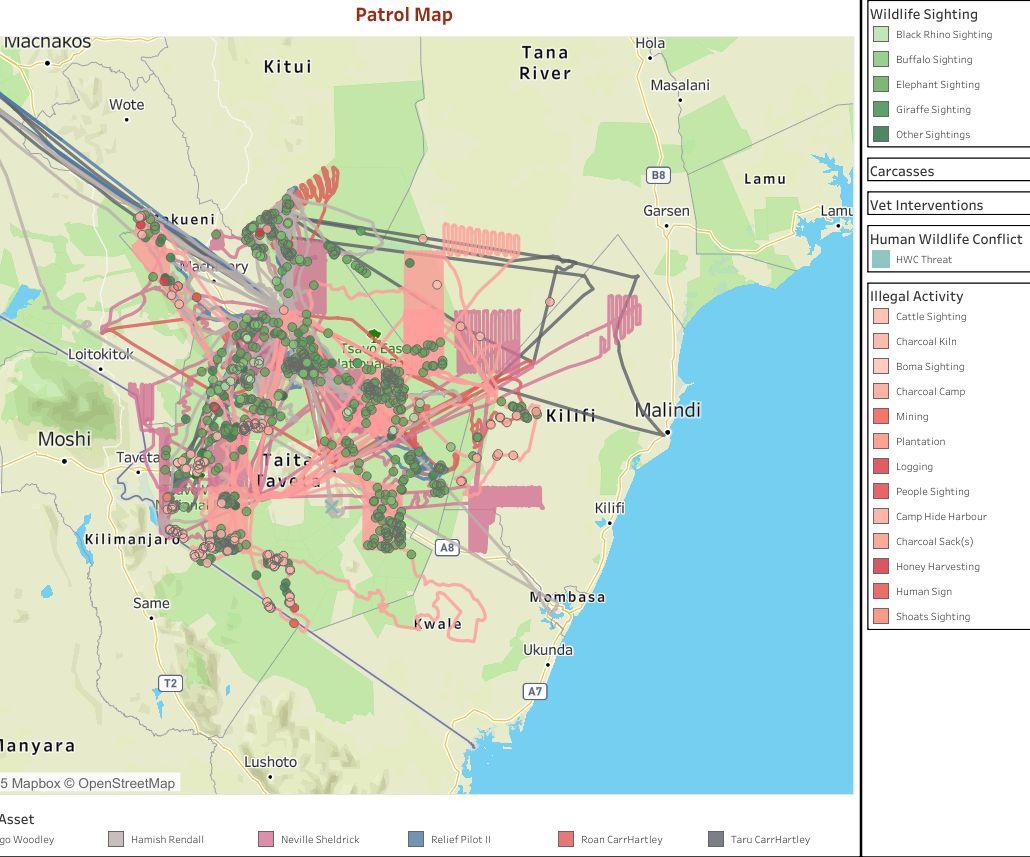



In February, the Aerial Unit participated in the Tsavo Conservation Area Wildlife Census, led by Kenya's Wildlife Research and Training Institute (WRTI). This exercise is undertaken every three to four years, with the aim of counting all wildlife larger than an impala, with a particular emphasis on the elephant population
This year, SWT supported the census with the donation of 25 drums of AVGAS as well as two �xed-wing aircraft �own by two SWT pilots, one helicopter and pilot, and one aircraft engineer. Three KWS aircraft, two Save the Elephants aircraft, two Tsavo Trust aircraft, and three privately owned aircraft also participated
Over the course of seven days, more than 49,000 square kilometres were covered with many more kilometres �own when considering transit time to and from counting blocks SWT’s two �xed-wing aircraft �ew a total of 109 6 hours, covering a distance of more than 15,000 kilometres
While the of�cial wildlife �gures from the census are yet to be released, there is expected to be a healthy increase in Tsavo's elephant population Most notable during the census was the fact that only two elephant carcasses were discovered, both which were old and had tusks intact. This is a signi�cant improvement from recent censuses, where multiple poached elephants, with tusks removed, were sighted.
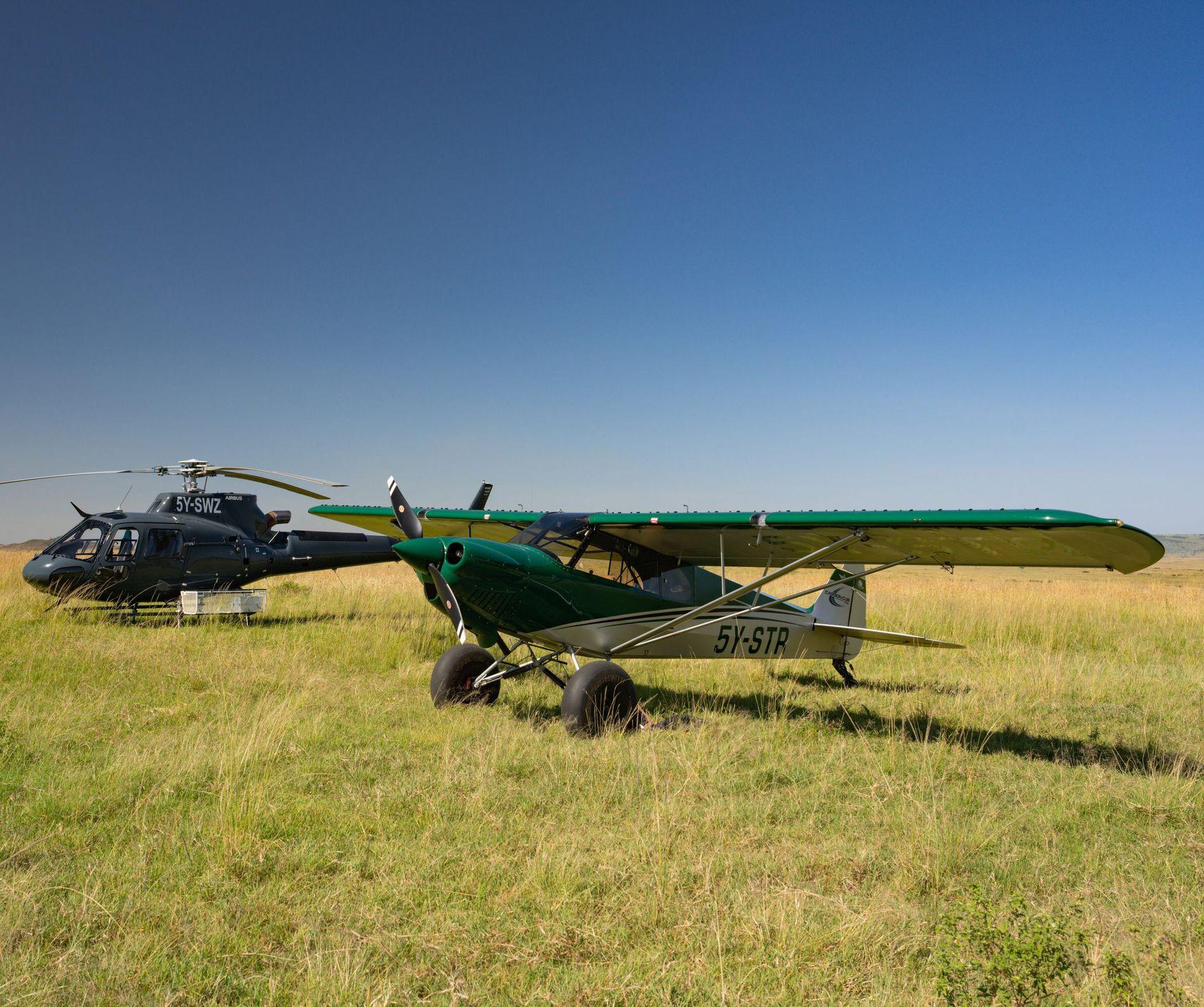


Simultaneous to the wildlife census in Tsavo, two of our other aircraft a helicopter and �xed wing were in the Maasai Mara, participating in a black rhino ear notching and tagging exercise. The objective of this exercise was to enhance monitoring and protection efforts by �tting black rhinos with LoRAWAN tags and ear notches for identi�cation purposes
A total of 14 rhinos were successfully tagged and notched, with the aircraft racking up an impressive 83 hours of �ight time and over 8,000 km of distance covered During the course of the exercise, the team also assisted with six veterinary interventions of injured animals sighted during the search for black rhinos. These included a white rhino with an infected eye and �ve elephants with arrow or spear wounds, suspected to have been caused by human-wildlife con�ict
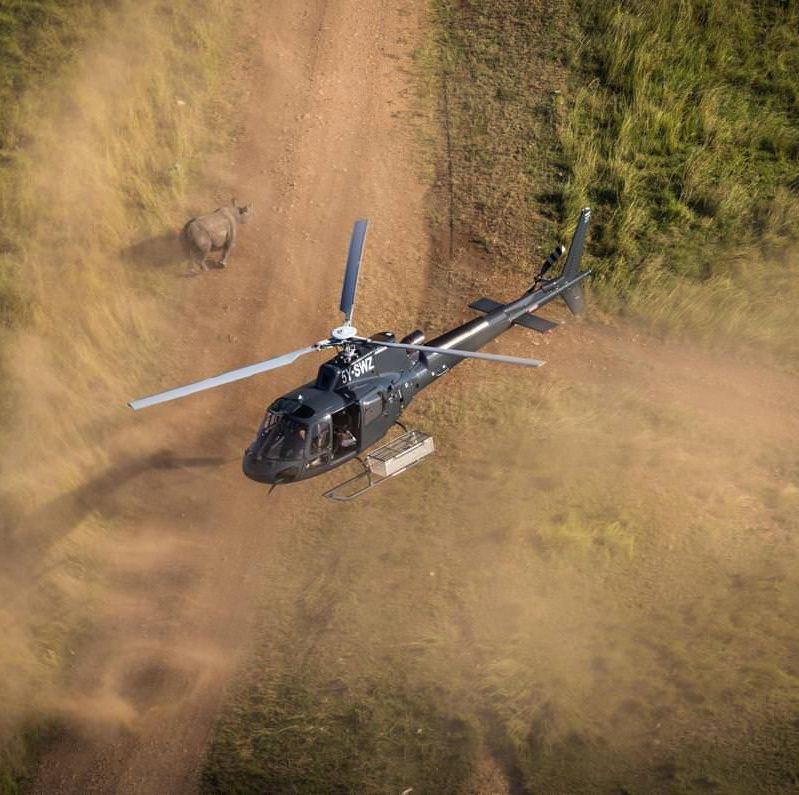
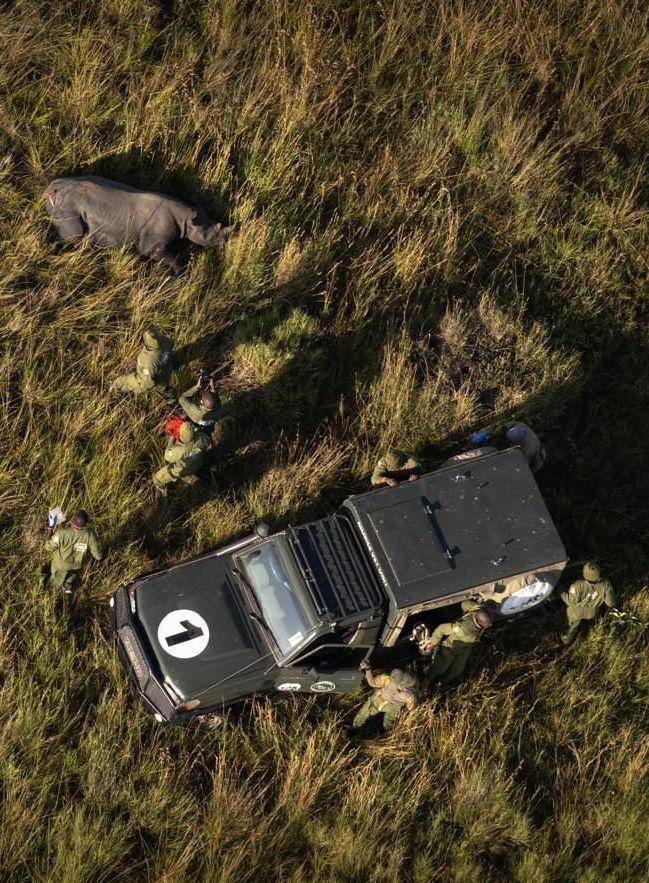
Back in Tsavo, the Aerial Unit assisted in a further �ve veterinary cases in February, including four elephant treatments. These included an elephant with a suspected arrow wound, an elephant with a spear wound, an elephant with a severe wound caused by a snare, and another elephant with a severe wound on its ankle of unknown origin
The snared elephant was �rst sighted by a �xed-wing and then darted with helicopter assistance before the snare could be removed and the wound cleaned. Due to the severity of the infection, the prognosis was deemed fair. Again, a �xed-wing aircraft was used to sight the young elephant with an injury on its ankle, before a helicopter was called to assist with darting. Due to the young age of the elephant (approximately six years old) and the severity of his injury, Dr. Limo determined that a rescue was the best course of action. The young elephant was transported to Voi Stockades, where he will receive repeated treatments for the injury until he is strong enough to be released back into the wild Prognosis is guarded With regard to the elephants with arrow and spear wounds, these were both sighted by �xedwing and later darted and treated from the ground, without helicopter assistance.
Also treated/rescued was a young lioness trapped in a concrete pit She had been found by an ADC employee on Galana Ranch and reported to SWT. Our helicopter had been patrolling in the area and quickly �ew to the lion’s location to assess what intervention was necessary. It was decided that the safest course of action would be to dart the lion before removing her from the pit A �xed-wing aircraft was utilised to transport the KWS/SWT Voi Mobile Vet Unit to Galana, where a successful rescue was undertaken The lion was then treated for minor injuries sustained in the pit, brought to ground level, and revived successfully.
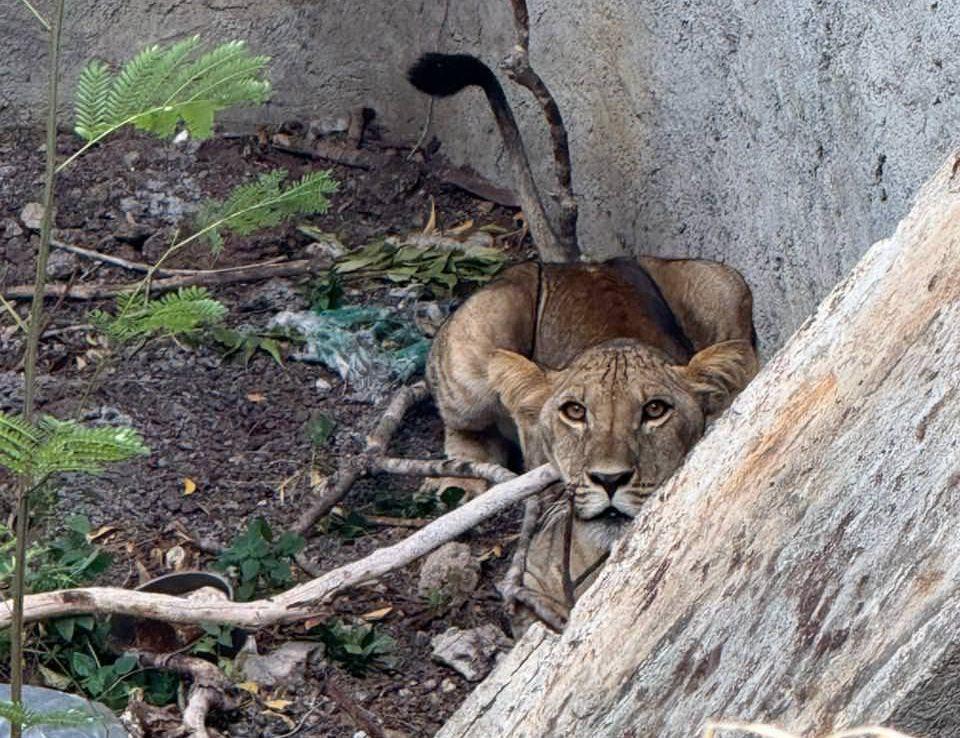

Another rescue was also conducted on Galana Ranch this time of an SWT ranger who sustained severe injuries froma poacher being arrested in an ambush. The poacher slashed the ranger with a machete before �eeing. A helicopter was immediately called and dispatched to the scene Upon arrival, the medical condition of the ranger became an urgent priority After receiving �rst aid at the scene, he was airlifted to Malindi for surgery Fortunately, although the lacerations were deep, there was no damage to any bone or tendons, and the surgery was successful. Unfortunately, the poacher/attacker was able to escape and remains at large.
The two major poaching incidents observed during February aerial patrols were a snared dik dik, which was sighted from the air and later attended to by a ground team that found a further 30 snares (small and medium) in the area. The second was a bushmeat harbour found within an illegal marijuana plot in Chyulu Hills National Park Here, ten snares were also recovered In addition to the above-mentioned marijuana plot, another three plots were also found and destroyed during a helicopter patrol.
Human-elephant con�ict cases numbered eight during the month, with a total of 43 elephants pushed out of settled areas and either back into the park or at least out of densely populated community land.

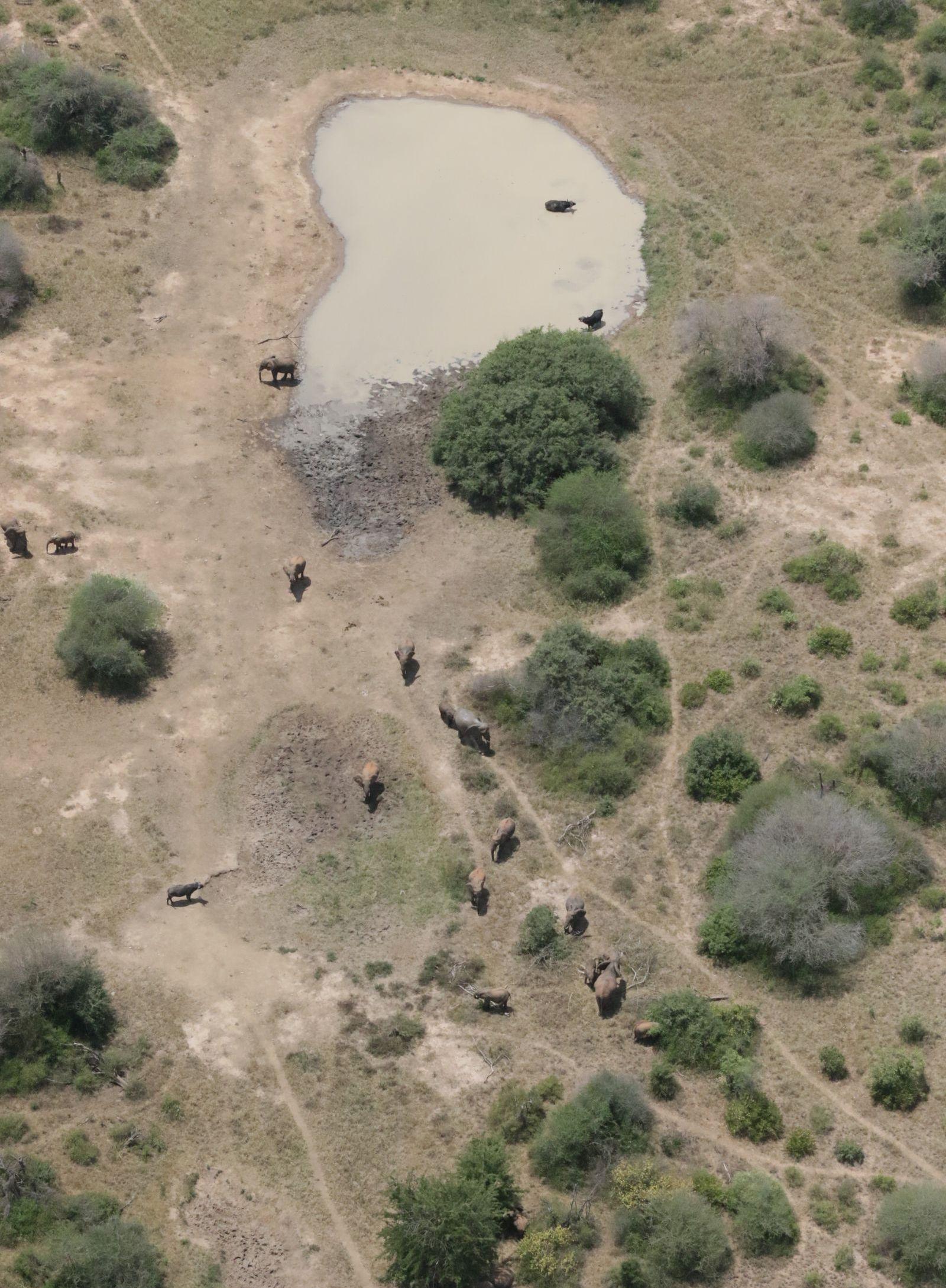
The most surprising occurrence in February were two out-of-season �res that occurred in Tsavo West and Chyulu Hills National Parks. Both were surveyed afterwards by a �xed-wing aircraft, measuring at a total of 626 hectares burned The �re season generally does not begin until July/August, so this (especially the Tsavo West �re) may be seen as a sign that there is an abundance of dry grass that illegal herders wish to burn ahead of the rainy season to promote fresh growth for livestock. The excess grass is most likely a result of reduced livestock pressure and above average rainfall last year. Livestock incursions in February were recorded mostly in Tsavo West along the western boundary, with fewer than usual incidents elsewhere
Three incidents of Illegal logging were also recorded in KARI ranch, with follow-up by a ground team leading to the arrest of one individual Charcoal burning activity was also recorded in large numbers on Kishushe Ranch as well as on Kulalu Ranch




The Aerial Unit, as with all Sheldrick Wildlife Trust's conservation projects, is a donorfunded initiative Thank you to our global supporters, who help us secure Kenya's habitats for the future and make an impact in the �eld, each and every day